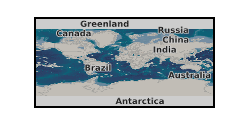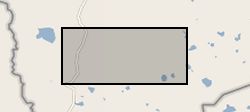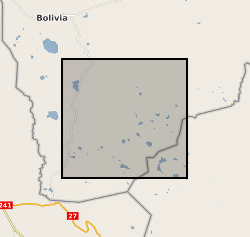Magma
Type of resources
Topics
Keywords
Contact for the resource
Provided by
Years
Formats
Representation types
Update frequencies
-

Raw mechanical data from currently unpublished sintering experiments using glass beads in a triaxial pressure vessel as well as porosity, permeability results of sintering under constant (uniaxial) load. These experiments will be submitted for publication in the future. All data were collected from 2021 onwards and analysed at LMU Munich. Synthetic glass bead samples are sintered to a target porosity in a furnace to make uniform (homogeneous) porous glass samples, before being cooled, measured for porosity and permeability and then placed in a furnace either: 1) in a uniaxial press; or 2) a triaxial pressure vessel. In 1) a constant load is applied for 3 or 5h; In 2) a hydrostatic or deviatoric stress is applied for variable amount of time while the permeability evolution is constantly measured. These experiments impart physical changes to the porous samples. All samples porosity and permeability (using constant flow rate and nitrogen as a permeating fluid) are also measured post-experiment. Sintered glass beads act as an analogue for magmas. Understanding the evolution of transient porous network in magmas is key to understanding pore pressure evolution in volcanic conduits, which controls effusive-explosive transitions
-

Vesicularity (phi) as a function of time for samples of natural hydrated silicate glass (obsidian) from optical dilatrometric analysis. Also numerical model for analysis of dataset and associated user guide.
-

The data consists of a spreadsheet containing rheology data for 39 samples of syrup, containing air bubbles and/or spherical glass particles. These data were used by Truby et al. (2014) to support a model for the rheology of a three-phase suspension. Each sample was placed in the rheometer (concentric cylinder geometry), and the stress was stepped up and then down, taking a measurement of strain rate at each step. Further details of the experiments may be found in Truby et al. (2014). NERC grant is NE/K500999/1. Co-author working with a NERC grant, NE/G014426/1.
-

These datasets are for samples collected from Volcan de Colima (Mexico) which is at coordinates: 19°30’46" N 103°37’02" W / 19.512727°N 103.617241°W. This volcano erupts magmas that are crystal-bearing, making those cooled volcanic rocks ideal for experimentation. And so samples were cored from blocks from that volcano and those cores were then returned to high temperatures (up to 1000 C) and then deformed under controlled stresses. These data form the central part of this publication: https://doi.org/10.1016/j.jvolgeores.2024.108198. The deformation experiments were performed at LMU (Munich, Germany). The volcano coordinates from which the samples were collected are given above. The samples were deformed in a high temperature hydraulic press equipped with acoustic emission sensors. This is the ideal device for determining the behaviour of the magmas from Volcan de Colima under the same stresses and temperatures at which they were erupted. The data give key clues as to the modes of flow behaviour of the magma in volcanoes. This work provides generalised insights into magma flow behaviour.
-

These data, presented in an excel spreadsheet, where each tab is a different sample (corresponding to the names in the publication), shows the fluid flow volume through time during a permeability measurement, plus the calculation of permeability. These permeability data were used in the publication by Weaver et al. 2023 (https://doi.org/10.1016/j.epsl.2023.118410) The data was collected and analysed at the University of Liverpool and each sample is made of volcanic glass fragments from Hrafntinnuhryggur, Iceland. The geographical location of the samples is here inconsequential for the dataset, the specific obsidian was chosen for its physical properties alone. The experiments were conducted and the data collected and analysed in 2021 and 2022 for publication in 2023. Experiments consisted of placing loose volcanic glass fragments in a crucible and placing the assembly in a high temperature oven (1006 oC) for variable amount of time to sinter them into a coherent material, before cooling and measuring permeability. The permeability measurement was made using the constant head permeability method with synthetic oil as a permeating fluid. This involves the filling of a given height of oil above the sample, creating an overburden that drives fluid flow. Details of the method are provided in detail in Weaver et al., 2023. The data were collected to assess the permeability evolution of fragmental systems undergoing diffusive outgassing, vesiculation and sintering to try to understand the longevity and impact of fragment-filled cracks present in volcanic environments.
-

Microgravity data collected at Uturuncu Volcano located in the Altiplano-Puna Volcanic Complex, central Andes, in November 2022. Raw data collected along a survey line spanning from Laguna Colorada to Laguna Verde using a field gravimeter. All data have been preprocessed and corrected for tidal and drift effects. Data are reported with respect to reference station UBAS located to the west of Uturuncu near the Laguna Colorada.
-

These spatial and temporal image datasets are of mixing fluids in a dyke-like (slot) geometry investigated using low-temperature laboratory experiments which are described in the paper Analogue experiments to investigate magma mixing within dykes (Havard et al., in review in Bulletin of Volcanology, January 2025). The experiments are low-temperature analogue models of magma mixing within dykes and are dynamically scaled to the natural system. Seven unique experiments using seven different miscible fluid pairs, representing two magmas of differing composition, were conducted at the University of Liverpool. The miscible fluid pairs were (and the shortened experiment name is): water and diluted glycerol (ExpW1); water and pure glycerol (ExpW2); water and glycerol mixed with golden syrup (ExpW3); water and pure golden syrup (ExpW4); diluted glycerol and pure glycerol (ExpD1); pure glycerol and diluted golden syrup (ExpG1); pure glycerol and pure golden syrup (ExpG2). The experiment setup consisted of the lower density fluid placed above the higher density fluid in the tank apparatus, then the tank was inverted to initiate the interaction between the fluids. The raw data is a temporal series of photographs (JPGs) collected over the course of each experiment located within the subdirectories “Raw”. The raw data is processed using the scripts accompanying the dataset to show how density and mixing evolves spatially and temporally within the slot. Further details are available in the directory metadata file.
-

Microgravity data collected at Uturuncu Volcano between March 2010 and November 2018 The file contains microgravity data collected between March 2010 and November 2018 in the Altiplano-Puna Volcanic complex.
-

RINEX files of GPS observations obtained in the Uturuncu volcano and surroundings (Altiplano-Puna Deformation Anomaly) during the November 2018 and November 2022 campaigns. In the 2018 and 2022 campaigns, 8 and 10 GPS stations have been installed respectively to help constrain the temporal deformation at Uturuncu volcano. The data contains the GNSS observations made in the 2018 campaign at the stations of Depeche Mode (DEMO), Foo Fighters (FOOF), Jimmy (JIMY), Led Zeppelin (LDZP), Metallica (MTLC), Sex Pistols (SEXP), UBQ4 and UTU Base (UBAS) In the 2022 campaign at the stations of Depeche Mode (DEMO), Foo Fighters (FOOF), IGGY, Jimmy (JIMY), Led Zeppelin (LDZP), Metallica (MTLC), Nirvana (NRVN), Offspring (OFSP), Sex Pistols (SEXP) and UTU Base (UBAS) The following devices were used to obtain these data: -Receiver Leica GR30 (serial numbers 1705008, 1705617 and 1705619) -Antenna Leica AS10 (serial numbers 16071044 and 16151018) -Integrate antenna + receiver Topcon Hiper Pro (serial numbers 326-1106 and 342-0370) -Masts "Nysiros style" and UNAVCO single pin + masts. The duration of data collection ranges from 1 day to 6 days depending on the site of the collection.
-

Broadband seismic data recorded at Fernandina volcano, Galapagos Islands, Ecuador, from December 2022 to November 2023. The data cover a period of epsiodic shallow magma accummulation and associated earthquakes.
 NERC Data Catalogue Service
NERC Data Catalogue Service